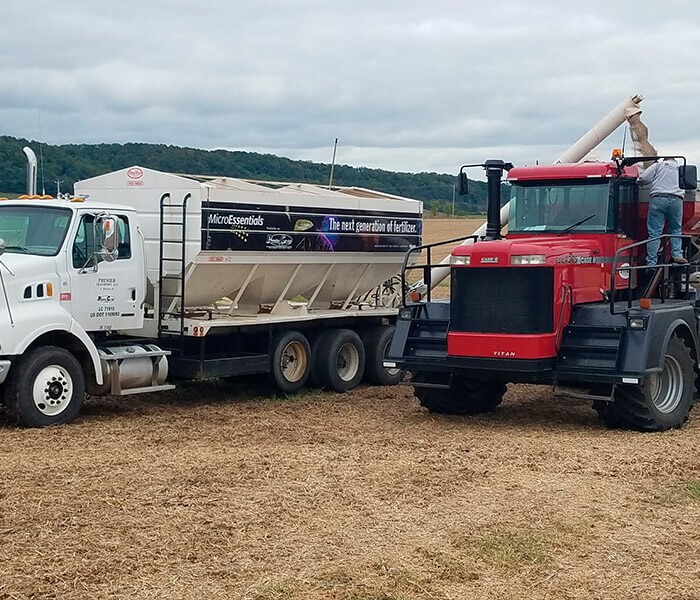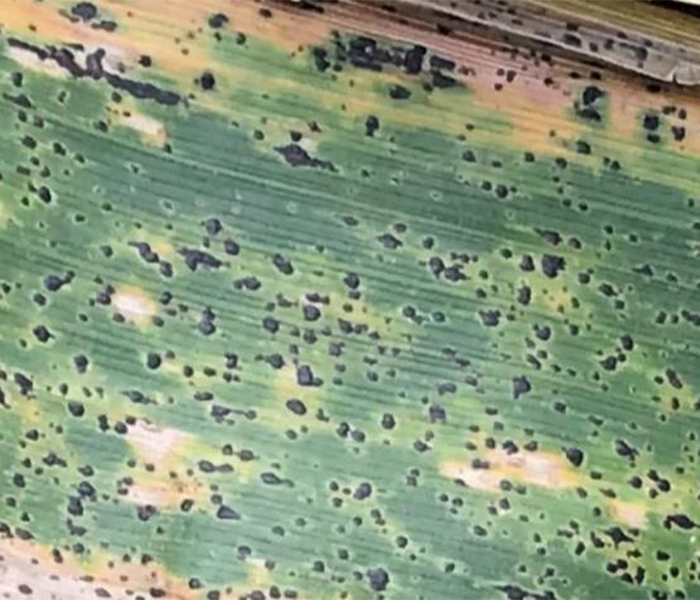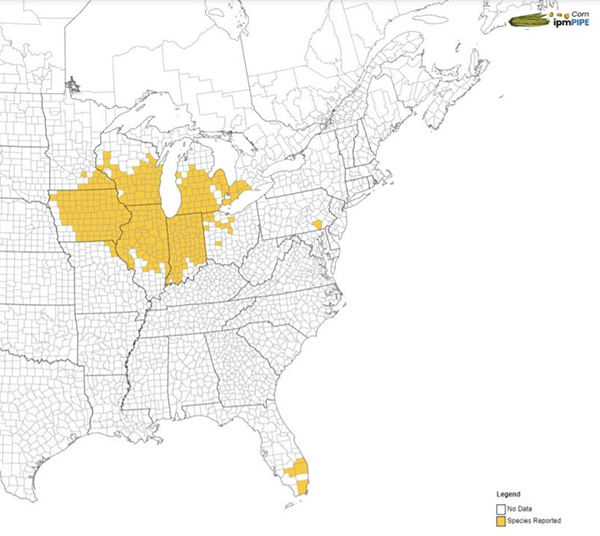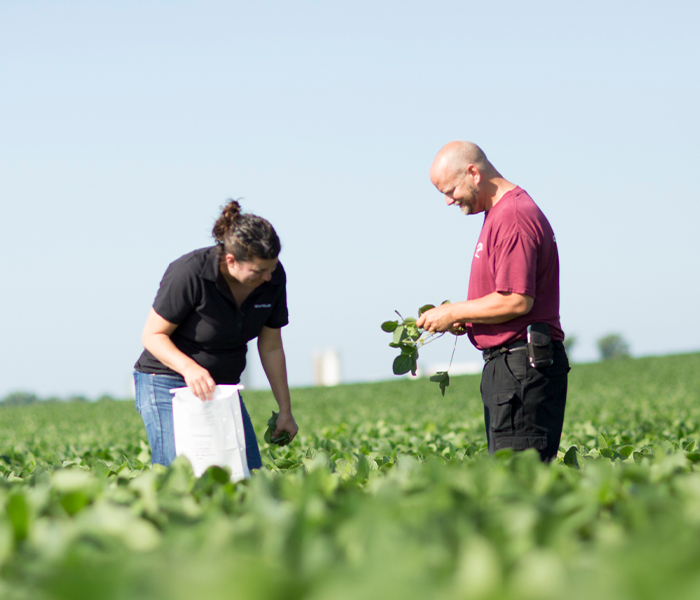All About Tar Spot
With cooler, wet conditions moving into our geography the past week, it is going to be very imporatnt to scout our corn crop for Tar Spot. As the name implies, tar spot can be identified by small black and circular lesions. They are slightly raised, and bumps can be felt on affected plant tissue. Lesions can appear on leaves, husks or stalks and are often surrounded by a light tan colored halo.
Lesions are caused by fungal structures called stromata that cannot be rubbed off affected plant tissues. Symptoms appear most frequently from silking through late grain fill.
Disease development is favored by cool (59°-70°F) and humid conditions (85% relative humidity). Extended periods of leaf wetness over 7 hours also favors disease development. It is believed that tar spot overwinters in corn residue and can be spread via rain splash and wind events. Under severe infestation, where most of a field shows 50% severity on the ear leaf during grain fill, significant yield losses of 20-60 bu/A have been reported. Increased stalk lodging and reduced forage quality in silage have also been reported with this disease. There have not been any reports of associated mycotoxins.
Tar spot spread from 2015-2020
Managing Against Tar Spot
There are several management techniques that can help lessen disease impact. Hybrids differ in their genetic resistance and selecting hybrids with good tar spot tolerance can greatly reduce disease severity. Screening efforts to evaluate tar spot resistance is ongoing. Crop rotation and residue management through tillage can also reduce inoculum loads although research into effects on tar spot is limited.
Several fungicides are labeled under the FIFRA 2(ee) Recommendations for control/suppression of tar spot in corn, including DuPont™ Aproach® and DuPont™ Aproach® Prima fungicides from Corteva Agriscience.
The FIFRA 2(ee) allows for a targeted pest not specified on the label, but does not allow for a change in dosage, application interval, or post-harvest interval. For more information on pesticide labels, please see www.cdms.net. Preliminary research into fungicide control suggests that VT/R1 through R3 are the best time to make an application.
Contact your local Premier agronomist if you would like your fields to be scouted, or if you have any questions on treating Tar Spot.
Will Tubbs
Retail Product Agronomist
Brevant™ seeds




